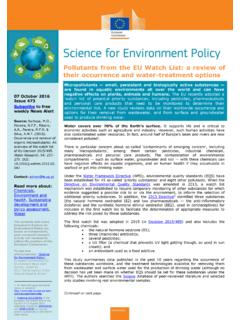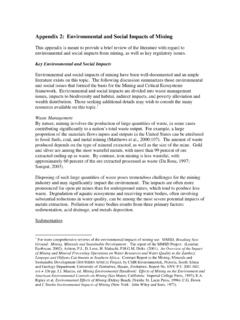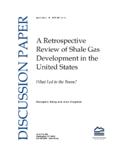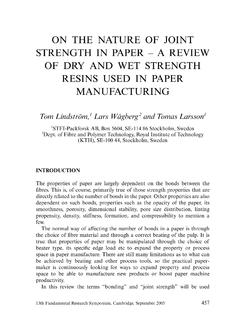Transcription of Informal Economy Literature Review - Kingslow Assoc
1 This publication is made possible by a grant from the Charles Stewart Mott Foundation. Informal Economy Literature Review December 2002 Authors ISED Consulting and Research 249 East Main Street, Building 2, Suite 2, Newark, DE 19711 Phone: (302) 368-3939 Fax: (302) 368-3978 Website: Email: Aspen Institute Microenterprise Fund for Innovation, Effectiveness, Learning and Dissemination (FIELD) 1 Dupont Circle, NW, Suite 700 Washington, DC 20036 Phone: (202) 736-1071 Jan L.
2 Losby John F. Else Marcia E. Kingslow Elaine L. Edgcomb Erika T. Malm Vivian Kao Research Assistant FOREWORD Some people engage in legal but Informal work in the United States in a system of cash-only exchanges. These individuals are operating unregistered businesses or engaging in under-the-table work. This type of economic activity is often called Informal work or referred to as the Informal Economy . There is a natural link between the Informal Economy and the services provided by microenterprise programs.
3 Could these Informal entrepreneurs be potential new clients? What would it take to move these individuals into licensed small business owners or to grow their after-hours jobs into an income-generating business? The Institute for Social and Economic Development (ISED) and The Aspen Institute both received funding from the Charles Stewart Mott Foundation to examine the Informal Economy and its intersection with microenterprise in the United States. ISED and Aspen are conducting ethnographic studies of Informal economic activities in three separate urban communities.
4 This qualitative research examines the attitudes and behaviors of Informal workers and explores the aspects of working informally that are appealing and may keep people from taking steps to formalize their enterprises. ISED is conducting a qualitative study of people in the African-American community who are engaged in Informal work. Fifty in-person qualitative interviews will be conducted 25 in Chicago and 25 in Baltimore. Aspen Institute is conducting a qualitative study of people in the Latino community engaged in the Informal Economy in the New York metropolitan area.
5 Forty qualitative interviews will be conducted, including fifteen people who are operating informally and receiving assistance from microenterprise programs. Aspen will also look at the practices of these programs A first step in the Informal Economy Project is to Review the work that has already been done and identify key features of the Informal Economy . This document represents a joint effort by ISED and The Aspen Institute. A clear message from the Review of Literature is that Informal work activities are a significant presence in the Economy .
6 We discuss some preliminary issues confronting microenterprise programs which plan to offer services to Informal Economy entrepreneurs. This first publication from the Informal Economy Project lays the foundation for the in-depth work that will take place in the three cities. Later reports will be released based on the specific findings from the city-specific studies. We gratefully acknowledge the funding provided for this research by the Charles Stewart Mott Foundation.
7 We are especially thankful for the keen interest of Jack Litzenberg in this area of research. His guidance and insights have been invaluable. THE AUTHORS Informal Economy Literature Review TABLE OF CONTENTS Introduction 1 I. Definition of the Informal Economy 2 A. History of the study of the Informal Economy 2 B. Typologies 3 C. Characteristics of the Informal Economy 5 D. What is excluded from the Informal Economy ? 8 II. Understanding the Informal Economy 9 A.
8 Origins in international theories of underdevelopment 9 B. Safety net or supplementary employment opportunity 11 C. Connection between formal and Informal sectors 11 D. Parallels to low-wage, low-skill labor markets 13 E. Social networks 15 F. Gender issues 15 G. Immigrant issues 16 III. Who engages in Informal work? 18 A. Why do people engage in Informal work?
9 18 B. Gender 19 C. Immigrants 22 D. Level of education 22 E. Level of income 23 F. Regional differences 25 G. Industries and occupations 28 IV. Size of the Informal Economy 32 A. Percent of the Gross National Product 33 B. Percent of adjusted gross income 33 C. Percent of economically active people 33 D. Number of enterprises operating informally 34 E. Comparison with other developing countries 35 V. Intersection Between Microenterprise and Informal Economy 36 A.
10 Natural link between Informal Economy and microenterprise 36 B. Competitive advantage 37 C. The clashing interests of Informal entrepreneurs and microenterprise programs 37 VI. Policy Implications 40 A. Promoting the positive associated with the Informal Economy 40 B. Repressing the negative effects of informalization 41 C. Making the transition from Informal to formal status 41 CONCLUSION 43 REFERENCES 45






